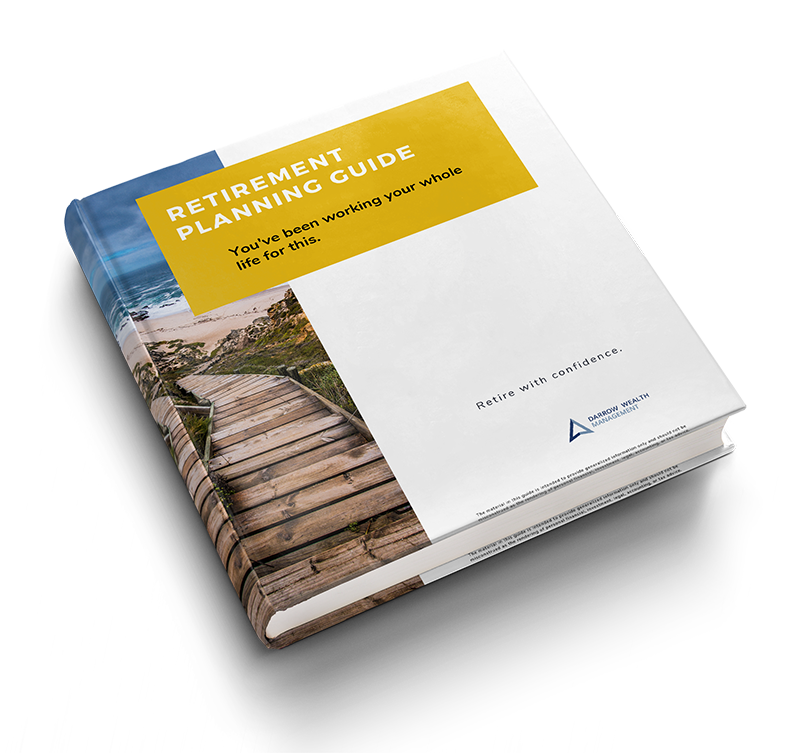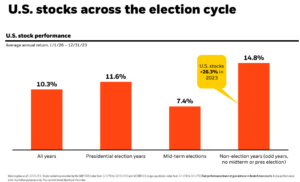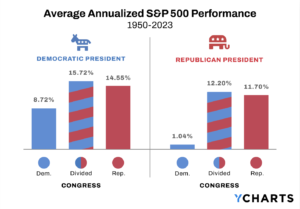How should couples file for Social Security benefits if they have unequal incomes? It isn’t always advantageous to wait until age 70 to file for Social Security benefits. What happens when one spouse is the primary breadwinner and both spouses are eligible for benefits on their own work record? When married couples have unequal incomes, it may make sense for the spouse with the lower benefits to file before 70.
Due to the numerous factors that will ultimately govern your lifetime expected benefits, deciding when is best to claim Social Security benefits usually requires a highly individualized analysis. However, by narrowing down the variables and making some assumptions, retirees and pre-retirees can glean some insight more relevant to their situation.
 Social Security filing trends
Social Security filing trends
According to a study by The Center for Retirement Research at Boston College, nearly half of all men and women (42% and 48%, respectively) claim their Social Security benefits as early as possible: age 62.
Although the next most common age to file for benefits is full retirement age (approximately 30%), less than 4% of all men and women wait until age 70 to claim their benefits.
These numbers are staggering considering retirees with a full retirement age (FRA) of age 66 stand to receive only 75% of their benefits by claiming at age 62, whereas by waiting until age 70 they could have pocketed 132% of their full benefits.
There are several reasons an individual may elect to begin receiving benefits as soon as they’re able. However, it is likely that many of the individuals claiming early benefits did so without much consideration or analysis. Especially for married couples where both spouses are eligible to receive their own benefits based on their work history, developing a Social Security strategy is advisable.
Social Security breakeven analysis: filing strategies for married couples with unequal incomes
Assuming Social Security income is not required to meet every day expenses, it can be advantageous to analyze your potential benefits under various Social Security filing strategies. The analysis is much more complex for couples than single individuals, as the breakeven analysis will need to factor in each partner’s age, life expectancy, spousal benefits, individual retirement benefit, tax implications, and so on.
It is well-known that the closer you get to age 70, the more money you will receive when eventually filing for benefits on your own work history. But in some cases, the additional monthly benefit from waiting does not justify forgoing income in the present. A breakeven analysis can help illustrate this. For simplicity, we’ll ignore the inflation indexing, tax implications, potential investment returns, and spousal benefits.
Sample breakeven analysis for Social Security benefits
Max is deciding whether he should file for benefits at age 62 or at his full retirement age, 66. His FRA benefit is $1,000/month and his benefit at age 62 is $750 (75% of his FRA amount). If he takes his benefits at age 62, he will receive $3,000 per year less than if he waited until FRA. However, because Max began receiving benefits 4 years early, he’s already accumulated $36,000 in total payments at the end of his 65th birthday.
This $36,000 ‘head start’ is divided by the $3,000 he sacrificed annually to take his benefits at 62, equaling a 12 year breakeven period compared to his full retirement age accumulations. Therefore, at age 77 (66 + 12 = age 77) Max’s accumulated benefits in either scenario would be equal at $144,000. If Max lives past age 77, he would have earned more over his lifetime by waiting until FRA, all else equal.
Of course, this simplistic example didn’t include the very real factors which will also impact an analysis, like investment returns, inflation, taxes, or spousal benefits. A true analysis of Social Security benefits and projections is very complicated, especially after figuring in a spouse, and usually requires specialized software.
Ways to Save For Retirement on One Income
Social Security planning strategies for couples with a primary breadwinner
Calculations aside, there are a number of planning considerations for couples, especially when one spouse’s benefits are expected to be a lot higher than the other’s. Social Security will pay the higher of your own retirement benefit, 50% of your spouse’s FRA retirement benefit (if living), or your survivor benefits (if widowed). Widows or widowers are eligible to receive 100% of their predeceased partner’s benefits. However, if your spouse filed for benefits early, or if you elect to receive survivor benefits before FRA, your monthly payment will be reduced.
If both spouses have similar expected benefits, there’s little to no value in a higher spousal benefit. If there’s a large gap in the life expectancy of the couple, it may be advantageous to focus planning around analyzing the survivorship benefit at different breakeven points, if the spouse with longevity files at FRA while the other spouse’s benefits continue to grow at 8% per year after FRA.
The spouse with higher benefits would likely not get any value by the lower-benefit spouse delaying the decision to file. Rather than claim spousal or survivor benefits, the high-benefit spouse would only claim benefits on their own work record.
Example: spouse with the smaller benefit files first
Let’s assume Kim, 63, is the ‘lower benefit’ spouse and her husband, Brad, 66, is the ‘higher benefit’ spouse. Both receive Social Security. If Kim dies before Brad, Brad’s own retirement benefits are still more than Kim’s benefit. So not only was he not receiving a spousal benefit, he also won’t get a survivorship benefit. Since Kim didn’t live to her breakeven age, it was advantageous to file early.
The decision for Kim to file or delay should focus on whether both spouses are likely to live past the breakeven age. Otherwise, Kim may not wish to delay. If Brad dies first, she’ll assume his higher benefits instead of her own anyways. This means the goal of increasing her own benefits by waiting is moot. For delaying as a strategy to pay off, Kim needs to live past her breakeven age and Brad needs to be alive when she does, so his benefits don’t overwrite hers.
Even this overly-simplified analysis gets quite complex without even factoring in the opportunity cost of investing extra income, taxes, dependents, inflation, and so on. In the end, even the most robust Social Security benefit projections will always be an educated guess, as life expectancy is perhaps the most pivotal factor in the cost/benefit of different filing scenarios.
Understanding spousal benefits: deemed filing and restricted applications
To add to the complexity, spousal benefits also play an important part in a couple’s breakeven analysis. Depending on the gap between each partner’s expected benefits, the decision to file early, at full retirement age, or delay can vary considerably.
File and suspend no more
In 2015, changes were made to the Social Security program which will impact many couples who haven’t filed for benefits yet. The popular ‘file and suspend’ strategy, where a spouse with a larger benefit would file at full retirement age then immediately suspend their application until age 70 (thus allowing a spouse to receive spousal benefits while the suspending partner’s benefits grew 8% per year), was disallowed in 2016.
Restricted application
As part of the same legislation, changes were made to an individual’s potential ability to select which benefits they wanted to apply for based on their age, called a restricted application. Previously, if a person filed for Social Security benefits early (before their FRA), their application was ‘deemed’ to have been filed for all benefits they were eligible for. For many early retirees, this meant receiving a reduced benefit based on their own earnings (primary insurance amount or PIA) and also a reduced spousal benefit, perhaps only 37.5% instead of 50% of their full spousal benefit.
Under the previous system, if an individual waited until they reached their full retirement age, they could elect to file a restricted application, which would enable them to elect to receive their full spousal benefit and delay claiming a benefit on their own work history until age 70.
Now, only individuals who turned 66 years old before January 2, 2020 were able to file a restricted application. Anyone turning age 66 on or after January 2, 2020 will be ‘deemed’ to have filed for all eligible benefits available to them – regardless of whether they are claiming their benefits before full retirement age or not.
Deemed filing
If your spouse is already getting Social Security checks when you file, you’re subject to the deemed filing rule. So you don’t have a choice about which benefits to apply for. When you file for Social Security, you’re automatically deemed to apply for spousal benefits too, if you’re entitled to them. Social Security only pays the greater of the two benefit amounts.
Can you file for Social Security benefits on your own work record and switch to spousal benefits later on? Yes, but only if your spouse isn’t receiving Social Security yet. If your spousal benefits are greater than your own, you could claim Social Security at 62 and switch to spousal benefits when your partner files.
Deemed filing means spouses should carefully coordinate decisions to file for benefits. Filing for benefits early on your own work record can create a double-penalty depending on the age gap between spouses. This can happen when the second spouse files before the spouse already getting benefits reaches full retirement age.
When are you eligible for a spousal benefit?
Three conditions must be met to be considered eligible for a spousal benefit:
- You must be at least age 62
- Your spouse must be eligible for his or her own benefits based on their primary insurance amount (PIA)
- Your spouse must have filed for benefits
It is also important to note that deemed filing will take place when you become eligible for a spousal benefit, even if one wasn’t available when you initially filed for benefits.
How are spousal benefits calculated?
Simplified Examples:
Important Note: the following examples have been simplified for clarity and are not intended to be representative of a complete benefits calculation. The following examples also do not include indexing for inflation. Consult your financial advisor or the Social Security office for questions about your personal situation.
Claiming benefits at age 62 on your work record
Tim, age 62, files for his Social Security benefits based on his own PIA. Tim’s full retirement age (FRA) is age 66. Emily, Tim’s wife, is age 64 and her FRA is also age 66.
If Emily has not yet filed for benefits, Tim is only eligible to collect benefits based on his own PIA. At full retirement age, Tim’s full benefit would have been $1,000/month based on his earnings history. But because he filed at age 62, he will only receive 75% of his full benefit, or $750/month.
Tim’s benefits at FRA = $1,000/month
Tim’s benefits at age 62 = $750
Maximum spousal benefits when both spouses wait until full retirement age to file
Assume Emily files at age 66, her full retirement age and Tim waits 2 more years until he turns 66 to file. A spouse’s maximum Social Security benefit is 50% of their partner’s FRA benefit amount, less your own benefits at full retirement age. So in this example, if Tim waited until his FRA to file, his maximum monthly benefit would be:
50% of Emily’s FRA benefit (e.g. maximum spousal benefit) = $2,200/2 = $1,100
Tim’s FRA benefit amount of $1,000 is then subtracted to arrive at his excess spousal benefit, if greater than zero = $1,100 – $1,000 = $100
Had Tim waited until age 66 to file, his monthly benefit would be $1,100 because his spousal benefits are greater than his own retirement benefits.
(Note: had Emily’s FRA benefit amount been $2,000 or less, Tim would continue receiving benefits under his own PIA as that would be greater than his spousal benefits.)
Calculating benefits when one spouse files before their full retirement age,and is also deemed eligible for spousal benefits before FRA
Now let’s assume in 2 years Emily files for benefits at her full retirement age of 66 and receives $2,200/month. Tim will be 64 at this time, and is now automatically considered eligible for spousal benefits. However, because Tim was ‘deemed’ to have filed for spousal benefits 24 months before his FRA, Tim’s benefits would be calculated as follows:
41.7% of Emily’s FRA benefit = $2,200 * .417 = $917
Tim’s full retirement age benefit of $1,000 is subtracted to determine if Tim qualifies for an excess spousal benefit on top of his benefits. If the resulting figure is less than or equal to zero, no spousal benefit is given. ( = $917 – $1,000 < $0.)
(Note: Tim’s benefit amount at FRA is used regardless of when he actually filed).
Since Tim filed early for both his own retirement benefits and spousal benefits, Tim will continue to receive his own Social Security benefits of $750, even after Emily files at her full retirement age of 66.
Social Security benefits when a spouse files early but isn’t eligible for spousal benefits until full retirement age
Had Emily waited until she was 68 to file for benefits, Tim would be 66 (FRA) when he became eligible for spousal benefits. Using the same example (Tim files at 62), his spousal benefits are calculated as follows:
50% of Emily’s FRA benefit (maximum spousal benefit) = $2,200/2 = $1,100. (Note: unlike a worker’s own retirement benefits, spousal benefits do not increase after FRA)
Tim’s FRA benefit amount of $1,000 is subtracted to arrive at his excess spousal benefit = $1,100 – $1,000 = $100
Tim’s actual benefit, claimed at age 62 is $750. After adding the $100 spousal portion of the benefit to Tim’s current benefits, his total benefit is $850.
Recap of Tim’s Social Security benefits under different filing strategies:
- His own benefits at age 62: $750
- Benefits after waiting until FRA to file for both spousal and his retirement benefits: $1,100
- His benefits when filing early for both spousal and retirement benefits: $750
- Filing early for his retirement benefits, but at full retirement age for spousal benefits: $850
Final thoughts
Deciding when to file is a complex and dynamic analysis for those who have the option to wait. As Social Security legislation and tax laws change over time, so too will the considerations as to when may be best to claim your benefits.
A comprehensive analysis of your situation and how to maximize your wealth though your Social Security benefits and other investments cannot be done in a vacuum. Including factors such as inflation, investment returns, taxes, and so forth, requires specialized software and an understanding of the other financial considerations at play.


 Social Security filing trends
Social Security filing trends







